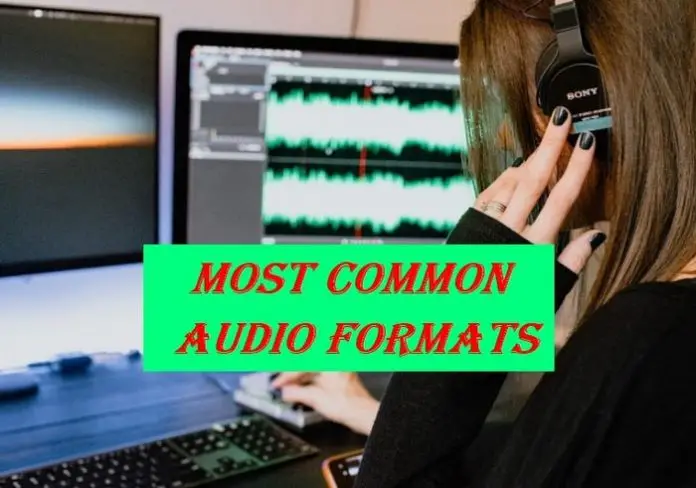Like video formats, there are different kinds of audio formats from which you can choose. With their own set of pros and cons, in this blog, we will talk about the topmost audio formats that come in all types and sizes.
In this regard, you should know that there is no best audio format. It depends on your preferences and what you are looking for. We have segregated the audio formats into three major categories: uncompressed audio formats, audio formats with lossy compression, and audio formats with lossless compression.
We are going to give you a brief idea of the same.
1. Uncompressed audio formats
It includes real sound waves that have been captured and then formatted to digital format without much processing. Thus, they are quite close to raw sound files. But they do take up a lot of disk space, which is one of the major drawbacks. However, one positive side is that they are the most accurate.
2. PCM
PCM stands for Pulse-Code Modulation. This audio format has a sampling sound and a bit of depth. There is no compression in this one! However, most people don’t prefer it since it takes up a lot of disk space. But it is commonly used in CDs and DVDs because it is the most accurate representation of analog sound.
3. WAV
WAV or Waveform Audio File Format was developed by Microsoft and IBM in the year 1991. MacBook users commonly use it. It is a windows container for various kinds of audio files. Even if you want to convert WAV to MP3 on Mac, there is a way to do the same. To know how to convert WAV to MP3 on Mac, you need to know the difference between WAV and MP 3 and how to play the files on a MacBook. The best way to convert WAV to MP3 is by finding the Permute app and following the instructions in the write-up.
4. AIFF
Audio Interchange File Format was developed by Apple for MacBook back in the year 1988. It contains various kinds of audio formats, just like WAV files. For example, most AIFF files contain uncompressed audio in PCM format. So it is suitable for your MacBook. However, you can also open it on your Windows computer without any hassles.
5. Audio formats with lossy compression
The first thing you need to understand is that lossy compression means some data is lost during the compression process. It is mainly done so that it takes lower disk space. But it should be done in the right way so that it is accurate. Otherwise, it can be a nightmare!
6. MP3
MPEG-1 Audio Layer 3 or MP3 was launched in 1993, and it became extremely famous in the world of music. MP3 files generally drop the sound data that exists beyond the hearing range of individuals. It also lowers the quality of sounds that are not that easy to hear by people.
The best part is that it is compatible with almost every device in the digital world, such as MacBooks, Android phones, smart TVs, iPhones, etc. As a result, it is the popular audio format across the globe.
7. AAC
Advanced Audio Coding was launched in 1997 as the successor to MP3. However, it is not as famous as MP3. Instead, AAC is commonly used and a standard audio compression method used by Android, iOS, YouTube, iTunes, etc. Moreover, AAC to MP3 conversion is more easy.
8. WMA (Lossy)
Windows Media Audio, first released in 1999, has gone through radio revolutions ever since its launch. Created by Microsoft, it was mainly made to address some of the disadvantages of the MP3 compression method. If you compare based on objective compression quality, then it is better than MP3. However, it did not gain much popularity because many devices and platforms do not support it.
Audio formats with lossless compression
This lowers the audio file size without losing any data between the source audio file and the compressed audio file.
1. FLAC
Free Lossless Audio Codec was first introduced in 2001. It can compress an original file by up to 60% without losing any data. How cool is that? It is an open-source and royalty-free audio file format. Most programs and devices generally support it. Many resort to FLAC instead of MP3 when it comes to music.
2. ALAC
Apple Lossless Audio Codec or ALAC was launched in 2004 as a proprietary format. However, it became open-source and royalty-free in the year 2011. Unfortunately, it is not as efficient as FLAC when it comes to compression. MacBook or iOS users rely on this one because iTunes and iOS provide native support for ALAC.
Which one is the perfect pick for you?
Well, there is no hard and fast rule. It depends on your objective and use. Use an uncompressed format if you are editing raw audio. On the other hand, go for lossless audio compression for listening to music. To save on disk space, use lossy audio compression. If you are not an audio enthusiast, lower quality shouldn’t matter much to you. And to know about high fidelity streaming, you can check out this blog by Forbes.





